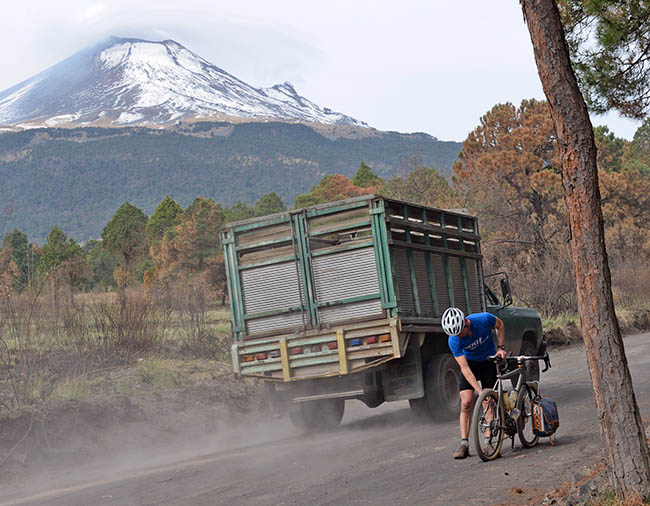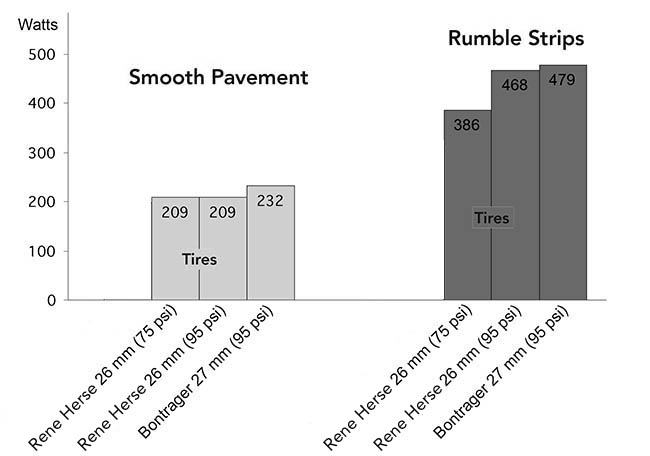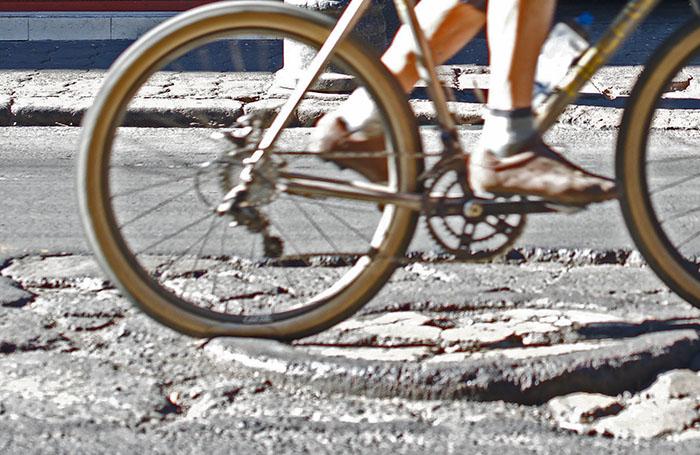Finding the perfect tire pressure

There’s a lot of talk about optimizing tire pressure these days. In years past, most of us inflated our tires to the maximum pressure rating shown on the tire sidewall. It’s more complex now. Like Goldilocks, we add air and then let out some again, until we’ve found what seems to work best. And then we still wonder whether we’re giving up speed and/or comfort. Would we be faster if we increased the pressure to optimize our tires for the smoother parts of the ride? Or should we let out air for the rougher sections?

The truth is quite liberating: Tire pressure matters less than most people think. We’ve tested this dozens of times – most recently in our latest tire tests that we’ll publish soon: On smooth pavement, higher tire pressure doesn’t make your bike significantly faster. On the left, you see the performance of our Cayuse Pass Standard 700C x 26 mm on smooth pavement. Whether we inflated them to 75 psi or 95 psi made no difference in their performance. It took 209 Watts to pedal the test bike at 19.3 mph (31 km/h), no matter the pressure.
What does make a difference is choosing tires with a supple casing. The third tire in the comparison required 11% more power to roll at the same speed. That’s huge.
The graph on the right shows the power required to ride on really a rough surface – in our case, rumble strips, but the same applies to cobblestones or rough gravel. In that case, the lower pressure was faster. A lot faster – 18% to be exact. Saving 82 Watts just by letting out some air is , especially as this also makes the bike more comfortable. Even so, we needed to put out almost twice as much power to keep the speed the same as on the smooth pavement. Wider tires and lower pressures would have narrowed that gap.
In summary, lower pressure doesn’t slow you down on smooth asphalt, and it makes you faster on rough surfaces. So it makes sense to err on the low side when choosing your tire pressure for mixed-surface rides. Of course, you don’t want to go too low, either.

If your pressure is too low, the tire can collapse during hard cornering. What happens is that the tire deforms too much. The more the tire flexes, the easier it is to deform it… The result: Your tire just folds over.
The good news is that with supple tires, you rely less on the stiffness of the tire casing to hold up the bike, so removing that part of the equation has less serious consequences. Tire collapse is less abrupt than it is with stiff sidewalls, where, one moment, your tire is holding up the bike fine, and then, without much warning, it suddenly folds over. During the early days of riding wide tires, the BQ team saw a number of collapsing tires, but they’ve never caused a crash. Having a tire collapse can be very scary – and it certainly slows you down!
The photo above shows my front tire almost collapsing during very hard cornering. It didn’t collapse, and I never noticed anything strange until I looked at the photo…

Now I have to admit that I was cornering pretty hard, enjoying the amazing grip you get on warm pavement. My inside pannier was dragging on the ground… My front wheel carried the load for a two-day trip, and I was trail-braking to maximize front-wheel traction as I banked the bike into the sharp downhill turn. Earlier, I had let out air for the rough portion of the old road across Jikkoku Pass in Japan. With my 42 mm tires, 28 psi or thereabouts (1.9 bar) is great for riding on rough trails, but it’s not quite enough for spirited descending on pavement.
Usually, when your tire is about to collapse, you notice that your bike is running wide in sharp corners. The wider your tires, the more noticeable this is. When I run my Firefly with its 54 mm tires on rough gravel, I often decrease the tire pressure to about 20 psi. If I then tackle a paved descent without airing up the tires again, the bike doesn’t like to turn into hairpins, giving me ample warning that my pressure is too low.

There is another issue with supple, wide tires: Lower pressures make the tire follow cambers in the road more. Rather than climb out of a rut in the pavement, the tire will just flex. (Sorry, I have no photo of that, so here’s one that shows how much a supple tire with a large sidewall can flex.) Air up a little more, and your bike feels more like a performance bike. On the road, I run my Firefly’s 54 mm tires at 32-35 psi, and it feels like a racing bike that is almost unaffected by these cambers.
There’s also the longevity aspect of your tires. If you run your tire pressure very low, it’ll put more stress on the casing. If you’re running tubes, that’s usually not a problem. Tubeless, the casing can start to leak. You’ll see dirt collect on the tire sidewalls where the sealant is evaporating as it leaks through the sidewall. Usually it takes a few thousand miles before this happens, so if you can accept that your tire wears out before the tread is too thin to ride safely, then this isn’t a problem. (You can always continue to run your tire with tubes when you get to this stage.) Or air up your tires a bit more, and you’ll reduce the wear on the tire casing.
So in summary, don’t worry about performance when airing up your tires. Instead, think about the handling, feel and safety you want and need. You don’t want your tires to collapse during hard cornering, but above that threshold, there is a large plateau where your tires will perform fine. Experiment with tire pressure and see what feels good to you.


